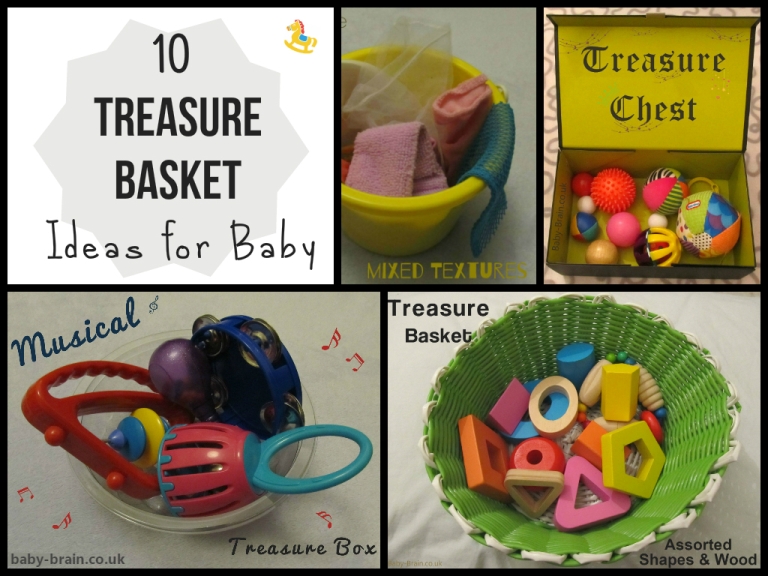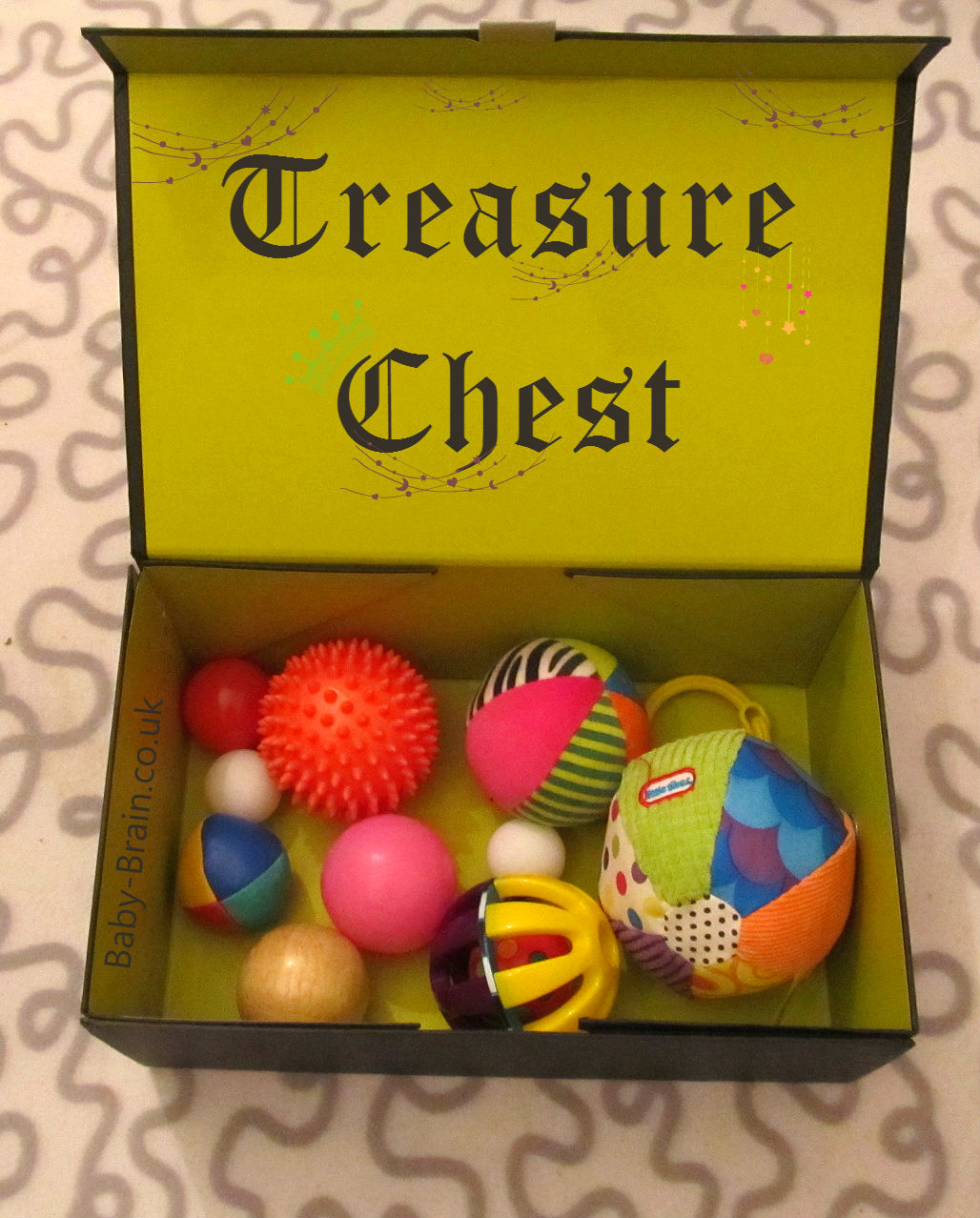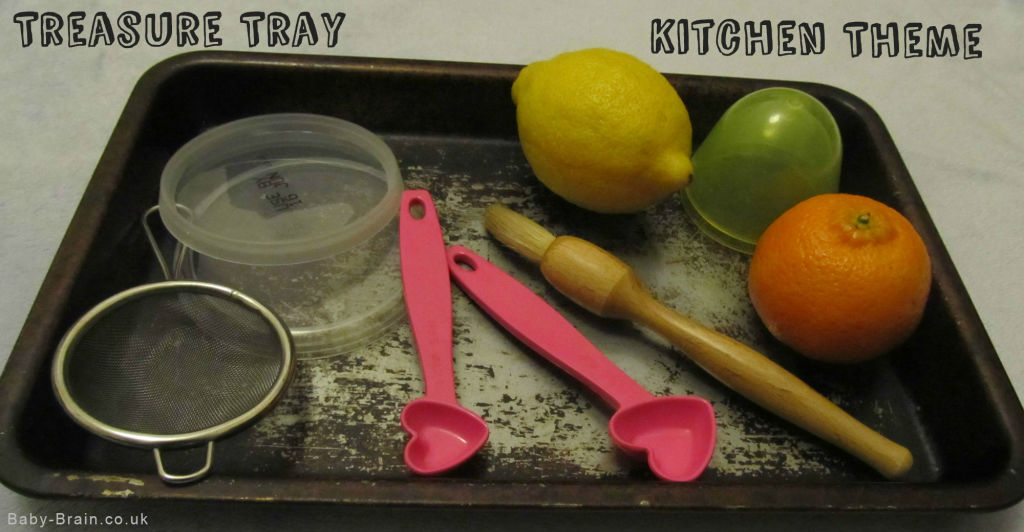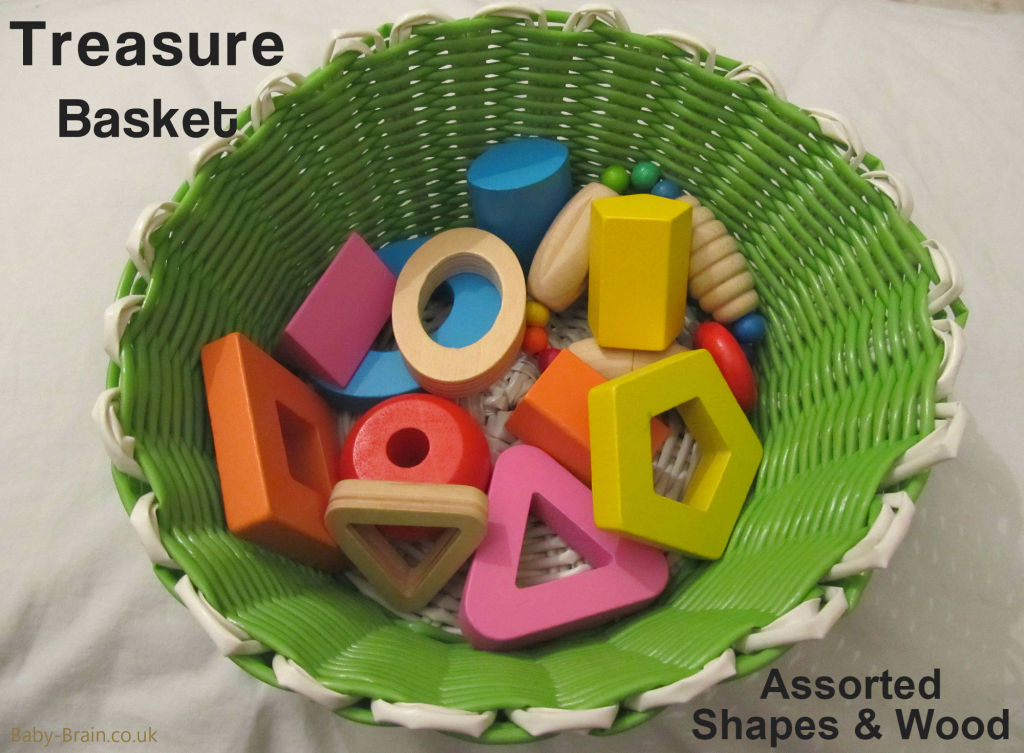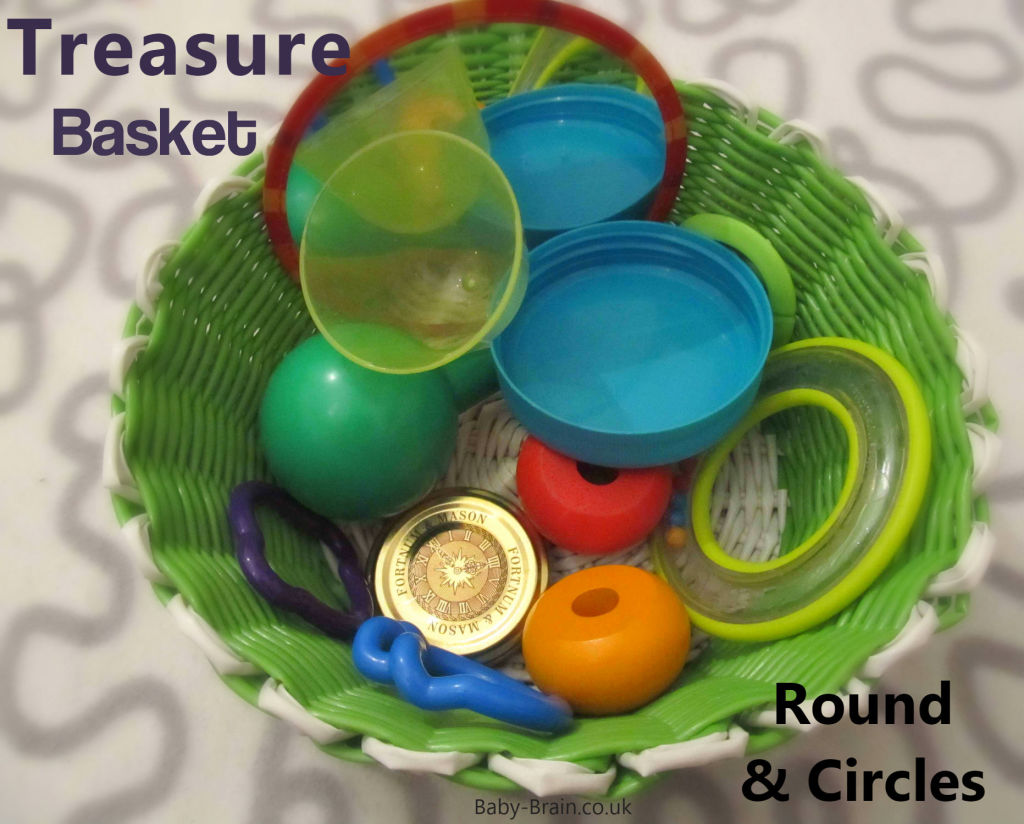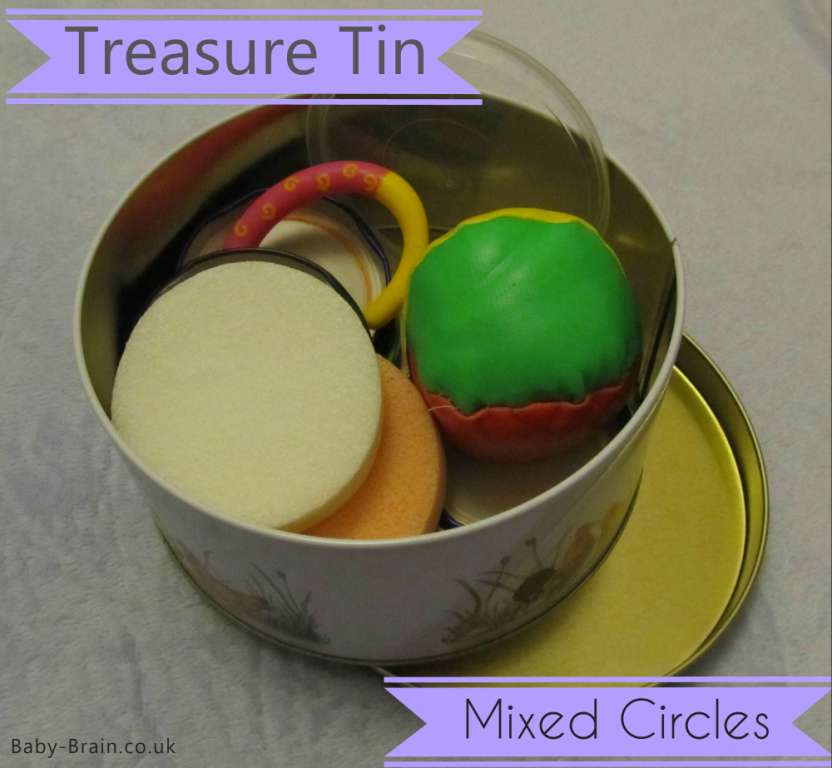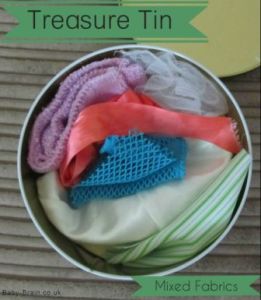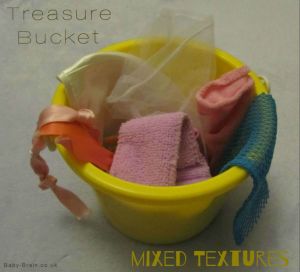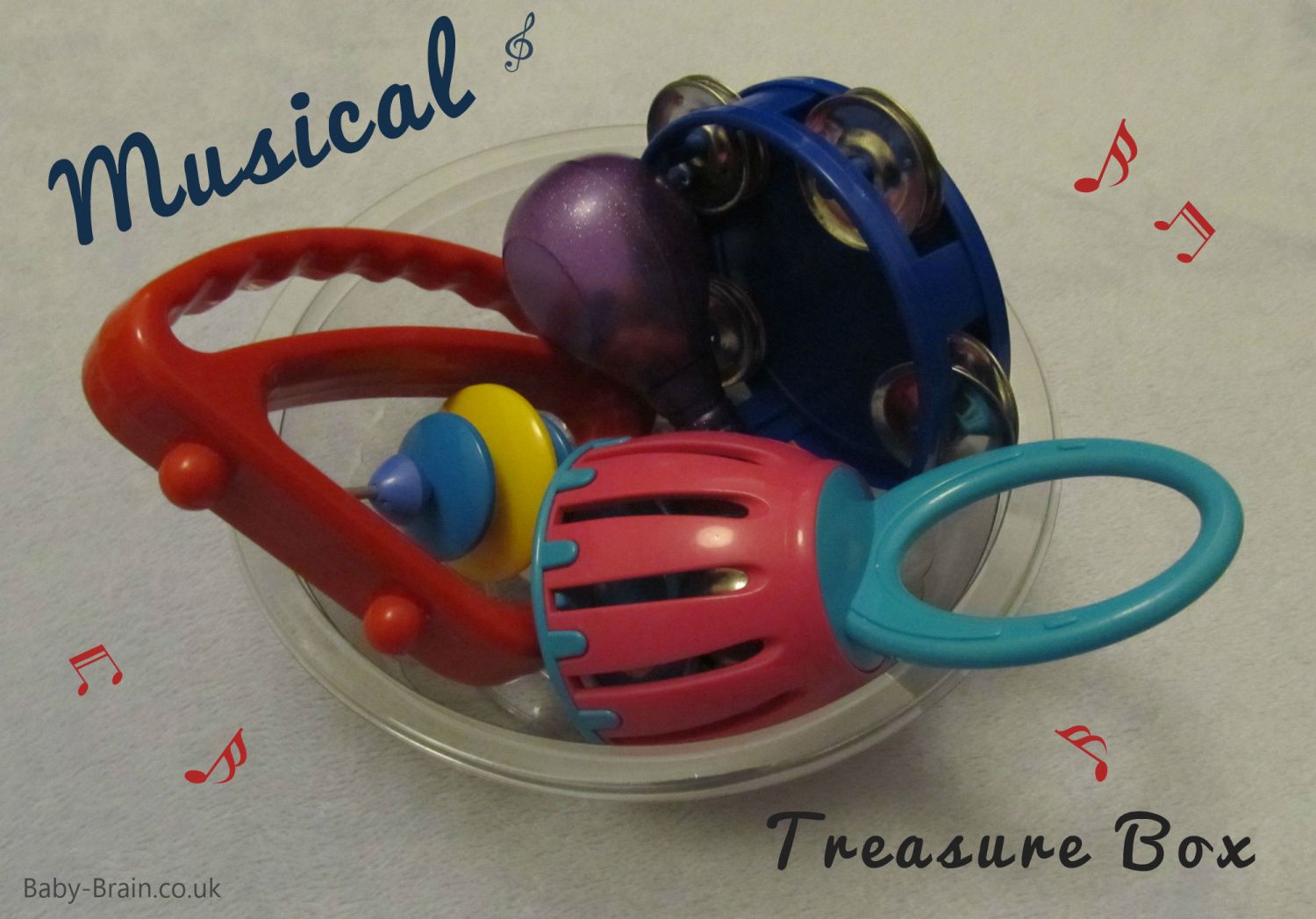I’ve added a new page – let’s make stuff! It’s going to be about my experiences of copying/attempting/being inspired by do-it-yourself infant and baby craft activities that I find. Examples might end up looking like those Pinterest fail pictures though! In this first example I’ve attempted to make a “baby play station” using toilet roll innards and wallpaper scraps. I was in a DIY store at the weekend looking for materials to make a sensory board with and walked past the wallpaper aisle. The helpful store lady said that I could tear off some scraps of the sample wallpapers, so I found some nice bumpy, tactile and strongly contrasting coloured papers to use. You could of course find many other baby-entertaining materials at home, for example, old scraps of wrapping paper or fabric.
Anyway, here’s what I did:
Tactile and Visual Entertainment Tubes



Toilet Roll Fun
- What was the idea originally supposed to be? – A baby play station (click on link for what the activity was originally meant to look like). I changed the idea slightly
- Where did I get the idea/activity from? – This website called Kids Activities Blog
- Why did I make it? – I thought it would be a fun, creative thing to, and something that would entertain the Little Lovely and also allow tactile and visual stimulation
The original activity is to make a baby play station using toilet paper rolls, wrapping different fabric/materials around each roll, attaching rolls to a curtain rod and then watching them roll as baby plays/spins them around. I decided to attach them to some string and attach the string to the play gym for the Little Lovely to play with.
Here’s the steps I took to make it:
Step 1: I found some materials to use that were visually stimulating and/or tactile . I used old wallpaper scraps that were bumpy and had a nice texture, and some shiny material.
Note: be careful of choking hazards when choosing materials and don’t chose things to wrap around the rolls that have little parts that could fall off or be pulled off easily. I supervised play to ensure safety and the rolls were tied up so that LL could not get them down or his mouth around them easily.
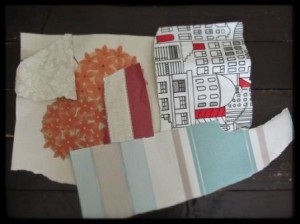
step 1: find some interesting material/paper scraps

step 2: glue onto roll
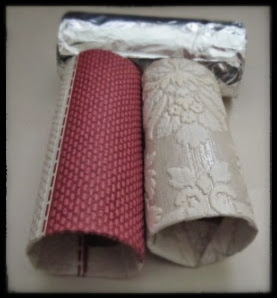
step 3: leave rolls to dry
Step 2: I carefully cut to size and glued the paper/material scraps onto toilet paper rolls, folding any excess fabric or paper into the inside of the roll.
Step 3: Leave to dry
Step 4: I threaded the tactile and sensory rolls onto thick string but you could attach to a rod as in the original idea, or something safe for your infant to play with. I then attached mine to hang between two poles of the play gym.
….and voilà! Here are some pictures of LL enjoying his new toy
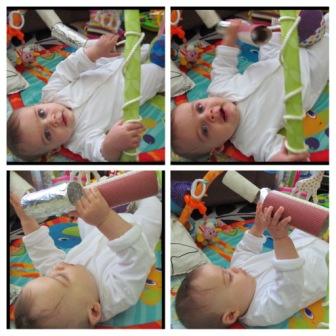


Note: I am wary of using string with babies because of any risks they could get caught up it in. Therefore, always attach safely so that there is no string or materials free for infant to injure self on and only allow play in your presence and under adult supervision. Take the string down after use and put away safely. Do not copy random pages/blogs on the internet. I bought some child-friendly white craft glue for this activity, however all of the glue remains under the paper/material and so does not directly touch little hands or mouths.
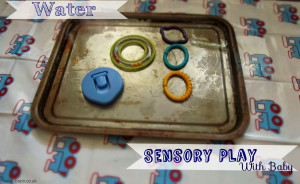

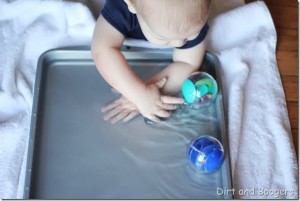
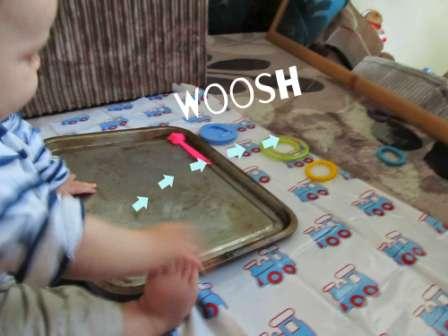
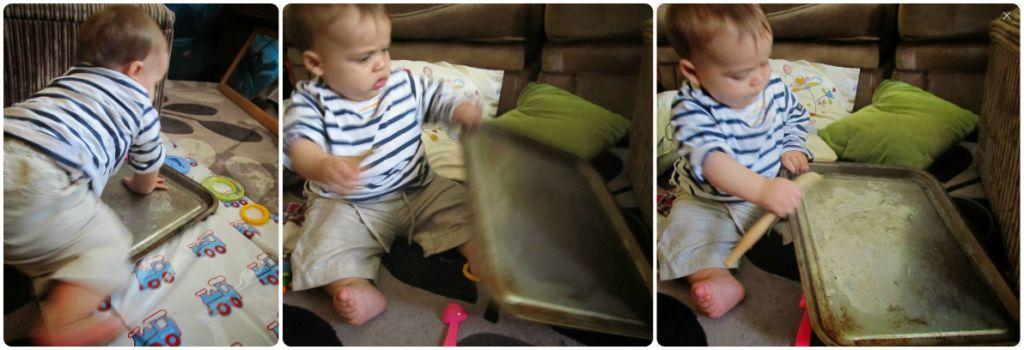
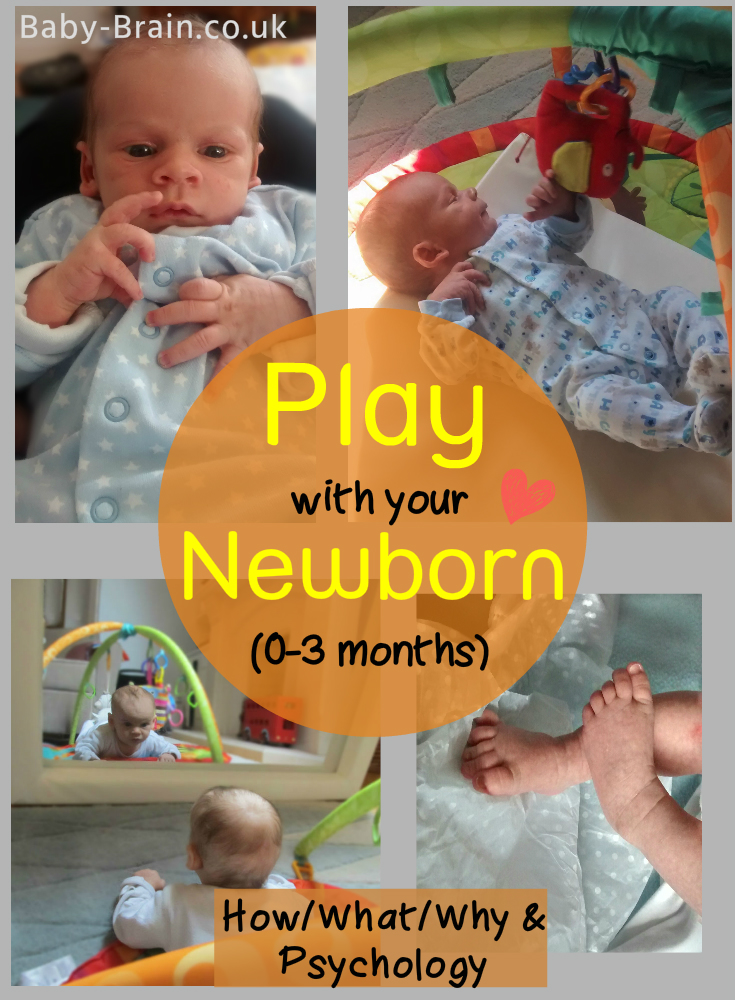
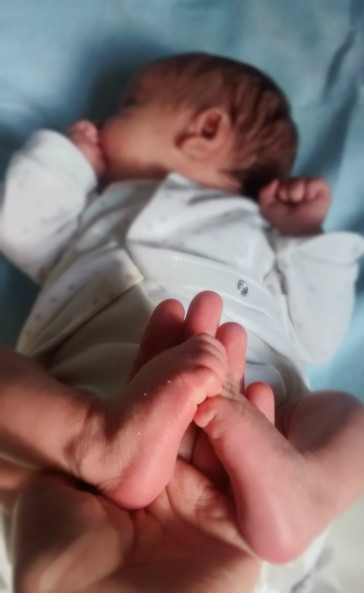
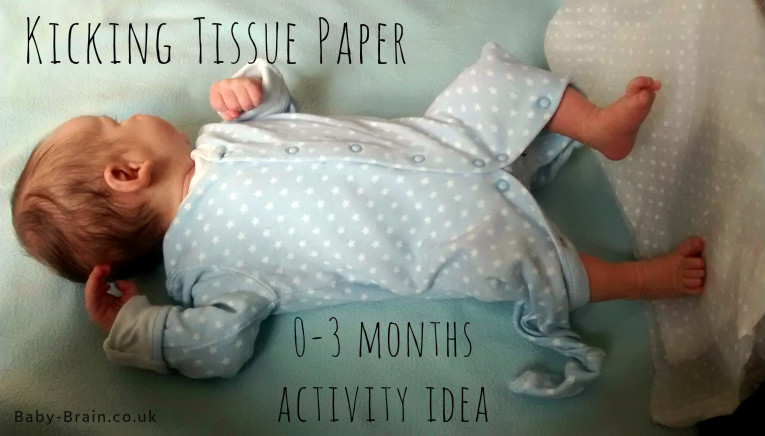
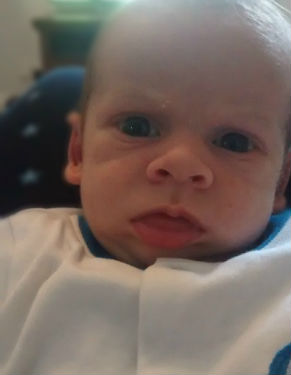

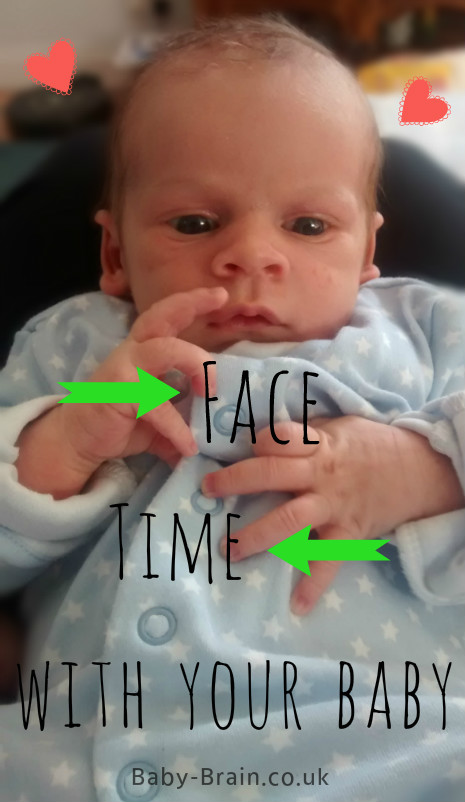
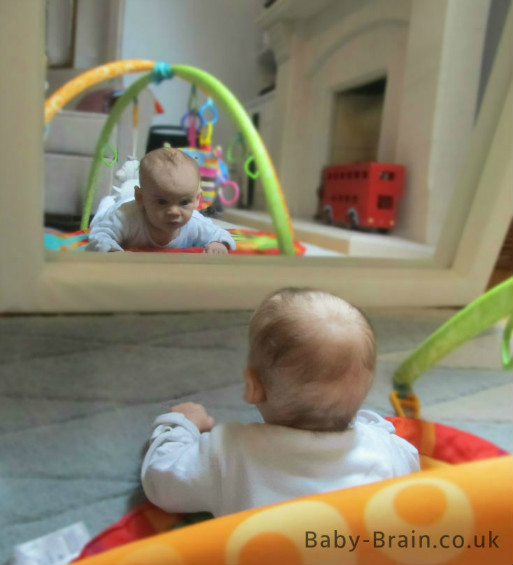
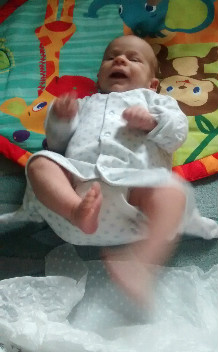

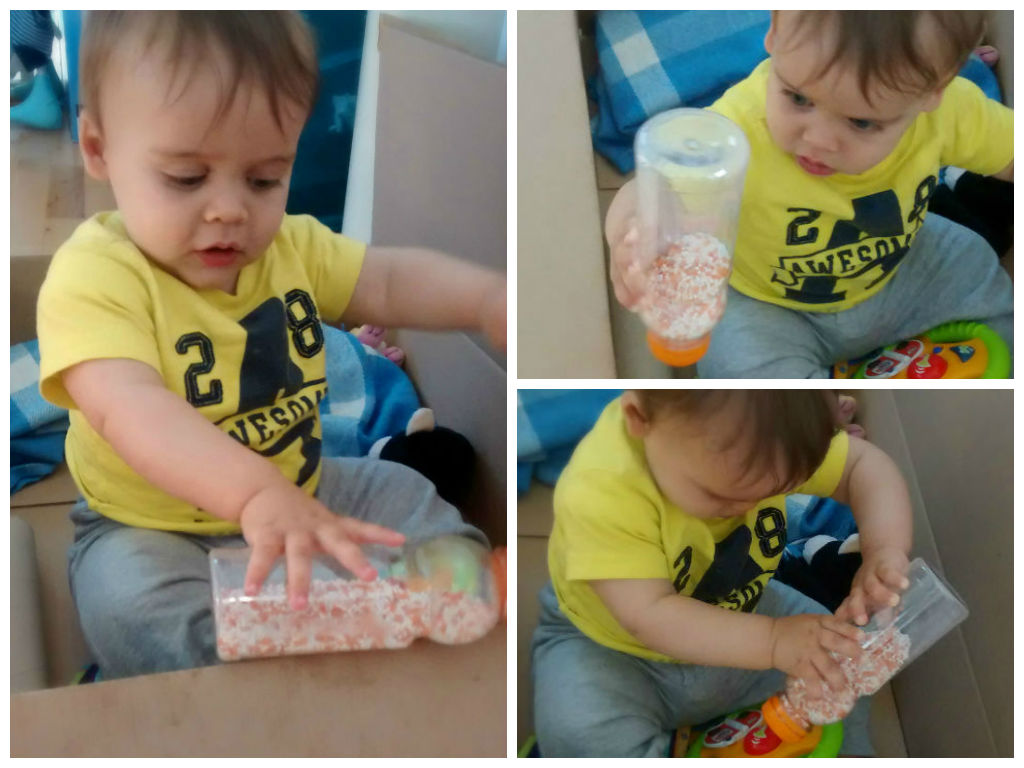
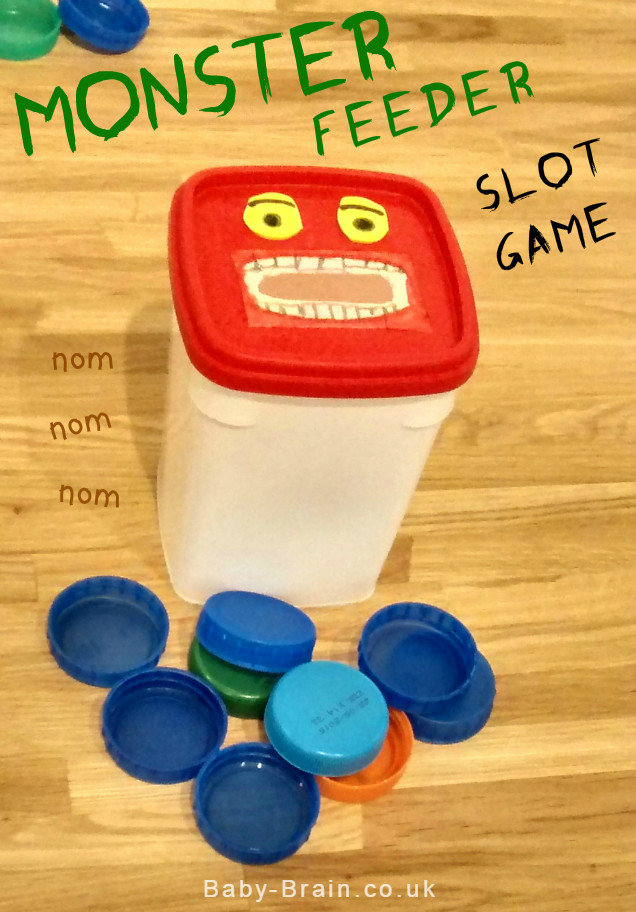


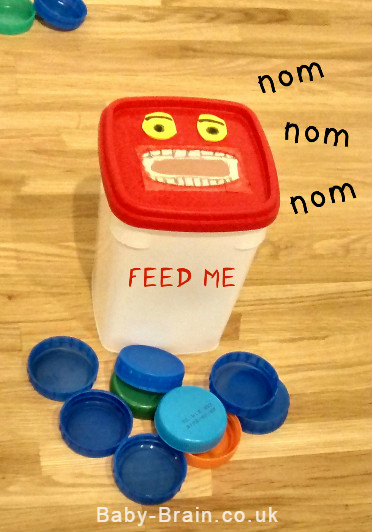
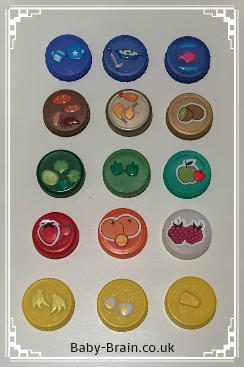

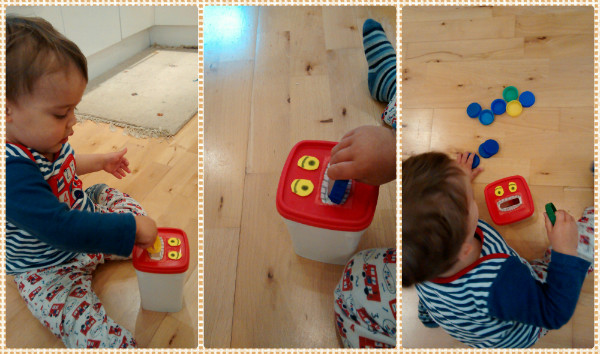
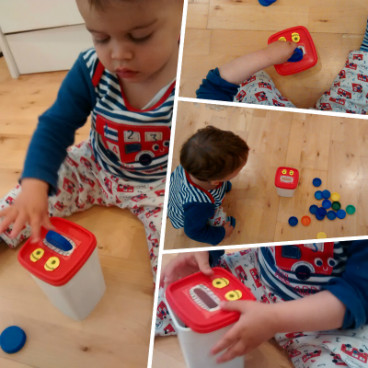
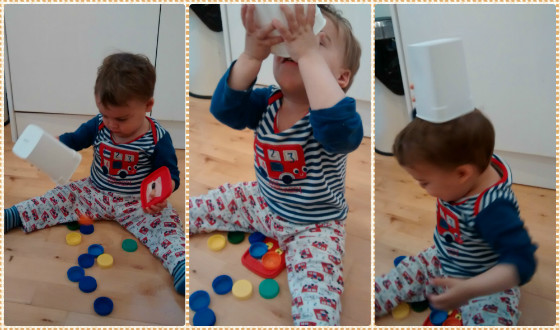







 Step 3:
Step 3:


